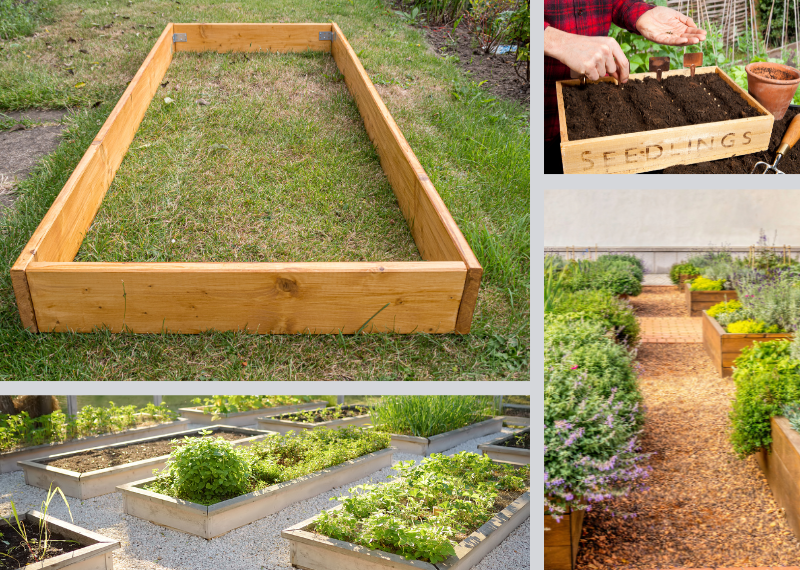How to Build a Raised Garden Bed
A Step-by-Step Guide
Creating a raised garden bed is a fantastic way to enhance your garden's aesthetics and productivity. Whether you're looking to improve soil quality, prevent weed growth, or simply add a structured look to your garden, a raised bed can be the perfect solution. Here’s a comprehensive guide to building your own raised garden bed.
Materials Needed:
- Wooden planks (cedar or redwood are ideal due to their resistance to rot)
- Screws or nails
- Drill or hammer
- Measuring tape
- Level
- Soil
- Compost
Step-by-Step Instructions:
- Choose the Location Select a sunny spot in your garden. Most vegetables and flowers need at least six hours of sunlight daily. Ensure the area is level and has good drainage.
- Determine the Size Standard raised beds are typically 4 feet wide (so you can reach the centre without stepping into the bed) and 8 feet long. The height can vary, but 12-18 inches is common.
- Prepare the Ground Clear the chosen area of grass and weeds. You can lay down landscape fabric to prevent weed growth from beneath your raised bed.
- Cut the Wood Measure and cut your wooden planks to the desired dimensions. For a 4×8 bed, you will need two 4-foot planks and two 8-foot planks.
- Assemble the Frame Using screws or nails, attach the planks to form a rectangle. Ensure the corners are square by checking diagonals. Use a level to make sure the frame sits evenly on the ground.
- Reinforce the Corners For added stability, you can install corner posts inside each corner of the frame. This is especially useful for taller beds.
- Fill the Bed Once the frame is in place, fill it with a mix of soil and compost. A good ratio is 60% topsoil, 30% compost, and 10% soilless growing medium (like peat moss or perlite) to improve drainage and aeration.
- Plant Your Garden Now it’s time to plant! Choose your favourite vegetables, herbs, or flowers. Follow planting guidelines specific to each type of plant regarding spacing and depth.
Maintenance Tips:
- Watering: Raised beds tend to dry out faster than ground-level gardens. Regular watering is essential, especially during hot, dry spells.
- Weeding: While raised beds reduce weed growth, occasional weeding will still be necessary. Mulching can help keep weeds at bay.
- Soil Health: Add compost or organic matter to the bed each season to maintain soil fertility and structure.
Building a raised garden bed is a straightforward project that can significantly benefit your garden. Not only does it provide better growing conditions for your plants, but it also makes gardening more accessible and enjoyable. Happy gardening!



